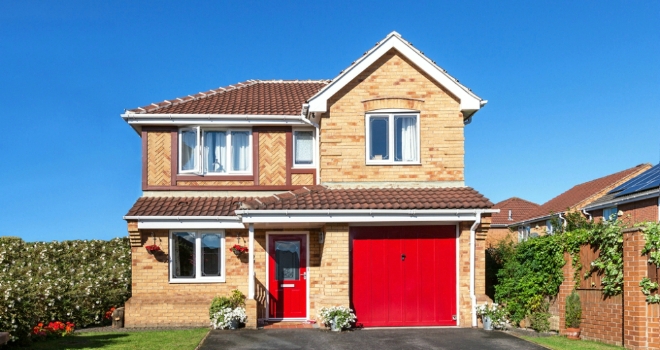
"With many businesses continuing to embrace hybrid working, we’ve seen people take the opportunity to find homes that better suit their lifestyles in locations that might not have been practical with a daily commute to consider"
The latest data released by Halifax has revealed that detached houses were the most sought-after property types among home movers in the last 12 months, accounting for 32% of sales - a sharp increase on ten years ago, rising from 25%.
Regional breakdown
Detached homes are the most popular choice for movers in the East Midlands (45%), Northern Ireland (42%) and six further regions. The greatest rise in popularity amongst buyers was in Northern Ireland, where they were up 13 percentage points, to 42% of sales. The South East, where many leave the capital in search of more space for their money, saw a rise to 35% from 24%.
Semi-detached homes topped movers’ choices in the North of England, while in London, flats (37%) were the most common property. Semi-detached homes accounted for 28% of UK sales in the last year, followed by terraced with 21%, flats with 12% and bungalows (7%) making up the rest.
Home moves
The number of home moves fell to a record low of 112,459 in the first half of 2023, down nearly 30% from last year. The previous low was in H1 2020 when the market shut down due to the pandemic - 114,020 home moves were completed then.
Regionally, the annual change in home movers is consistently down around 30% with one exception: Northern Ireland, which saw a 65% drop.
First-time buyer numbers also dropped during the period. In the first half of the year, 121,712 first-time mortgages were completed, around a third fewer than the previous year. This is the lowest recorded since the pandemic but is still close to the long-term average (2008-2023: 132,191). First-time buyers now make up 48% of home buyers in the UK, compared to 38% in 2008.
Rising prices
The average price paid by people moving home in the UK is £428,647, up 10% on last year, with the South East seeing the highest rise in prices during the last 12 months. The average home mover in the region now pays £591,247, a rise of 12%. By comparison, the North East has seen prices largely flat, up just 1% to £255,223.
The cost of the average UK home movers’ property is now double (+101%) what it was in 2013, £213,284. Over the same period, homes in nine of the nation’s 12 regions saw prices rise at similar rates, with just Scotland, Wales, and North East seeing price growth at lower levels.
The average deposit made by a home mover now stands at £150,497, up 47% against 2018. This rise is largely in line with home mover house prices over the same period, which grew 44%. London (£261,995) has the highest and the North East (£81,594) has the lowest deposits, Northern Ireland saw the largest increase over the last five years (93%), while the East of England saw the lowest (30%).
Kim Kinnaird, mortgages director at Halifax, commented: “The growing popularity of detached homes reflects a desire or need for more space. With many businesses continuing to embrace hybrid working, we’ve seen people take the opportunity to find homes that better suit their lifestyles in locations that might not have been practical with a daily commute to consider.
“It is also true that detached homes often come as a later step on the housing ladder for many and, when the opportunity arises, families will choose a home that gives them space to settle and grow over a longer period – a ‘forever home’, which will be a more flexible space for their changing needs and lifestyles.
“In contrast, the falling popularity of terraced homes reflects how they are increasingly seen as a first rung on the housing ladder. The relatively poor energy efficiency of many older terraced homes could also be a factor when buyers are looking at household running costs as energy costs look set to remain high.”





